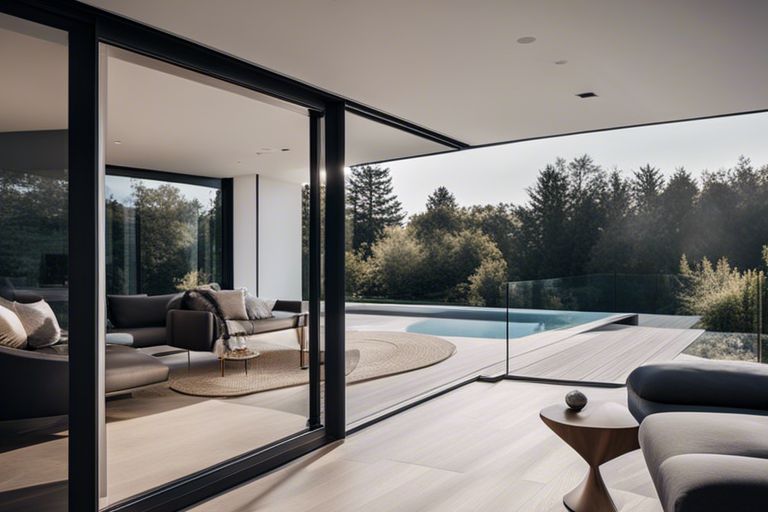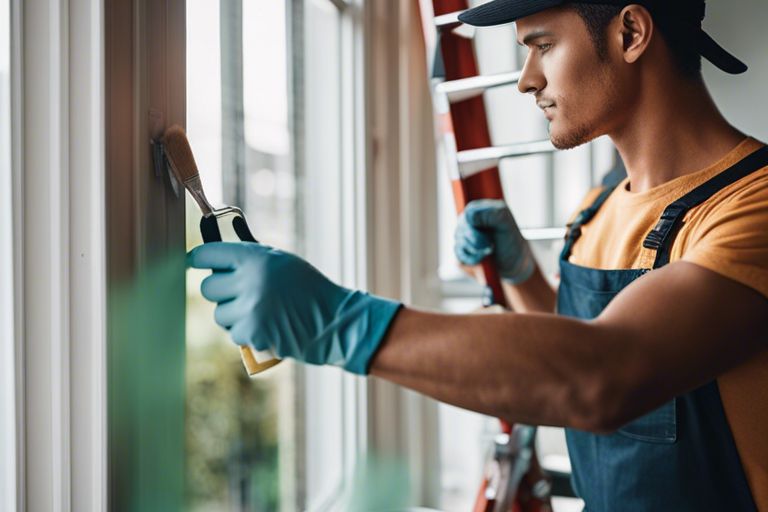When it comes to designing a space with flat rooflights, the choice of glass can significantly impact the overall aesthetics of the area. Considerations such as safety, natural light transmission, and thermal performance play a crucial role in selecting the right type of glass for your rooflights. From enhancing the visual appeal of the space to improving energy efficiency, the design choices you make can positively or negatively influence the functionality and style of your property. Understanding the different types of glass and their characteristics will help you make informed decisions to create a space that is both visually stunning and practical.
Key Takeaways:
- Light Transmission: Glass rooflights allow natural light to flood into the space below, creating a bright and airy atmosphere.
- Thermal Performance: Consider double or triple glazing options for improved insulation and energy efficiency, helping to maintain a comfortable temperature inside the building.
- Aesthetic Appeal: The sleek and modern design of glass rooflights adds a touch of sophistication to any architectural project, enhancing the overall aesthetic of the building.
Understanding Glass Rooflights
When it comes to designing flat rooflights, a crucial element to consider is the understanding of glass and its impact on the overall aesthetics and functionality of the space. Glass rooflights not only let in natural light but also add a modern and stylish touch to any architectural design.
Definition and Functional Attributes
Glass rooflights are sleek, transparent windows installed on flat roofs to allow natural light to penetrate indoor spaces. They are designed to provide optimal light transmission while ensuring thermal efficiency. The choice of glass type, thickness, and coatings plays a significant role in determining the level of insulation, solar heat gain, and sound reduction.
Historical Evolution of Glass in Roof Design
The use of glass in roof design dates back centuries, evolving from small glass panes in traditional skylights to innovative glass rooflight systems that are now integral to contemporary architecture. Glass technology has advanced significantly, allowing for larger, more durable, and energy-efficient rooflight installations.
Throughout history, glass roofs were mainly reserved for grand architectural masterpieces such as conservatories and atriums. However, with advancements in glass manufacturing and design, glass rooflights have become more accessible and versatile, being incorporated into a wide range of residential and commercial projects.

Aesthetic Considerations
When it comes to designing flat rooflights, aesthetic considerations play a crucial role in ensuring a harmonious integration with the overall architectural design. The choice of glass and how it interacts with light can greatly influence the visual appeal of a space.
Transparency and Visual Weight
Transparency is a key factor to consider when designing flat rooflights, as it affects the amount of natural light that penetrates the space below. Opting for high-quality, low-iron glass can enhance transparency, making the rooflight appear almost invisible and reducing its visual weight. This creates a seamless connection between the interior and exterior, allowing for unobstructed views and a sense of openness.
However, the visual weight of a glass rooflight can also be manipulated to create a statement piece within the architectural design. By using frameless or slim-profile designs, the rooflight can convey a sense of lightness and modernity, adding a touch of architectural elegance to the space.
Integration with Architectural Style
When considering the integration with architectural style, it is important to select a design that complements the overall aesthetic of the building. Flat rooflights can be customised to match traditional or contemporary architectural styles, blending seamlessly with the existing design elements.
Choosing the right frame finish and glazing options can further enhance the integration of flat rooflights with the architectural style. Whether it’s a sleek minimalistic design or a more ornate approach, the rooflight can be tailored to enhance the architectural character of the building.

Design Elements
Shape and Size Impact
When considering the design of flat rooflights, the shape and size of the unit have a significant impact on both aesthetics and functionality. The shape of the rooflight can dramatically affect the amount of natural light entering the space, as well as the overall visual appeal of the design. Choosing the right size is crucial to ensure proper illumination and to create a balanced look within the interior.
Additionally, the shape of the rooflight can also affect the ventilation and insulation capabilities of the space. Opting for a larger, rectangular rooflight may provide better ventilation and thermal efficiency, while a smaller, square unit might be more suitable for specific design requirements.
Frame and Glass Selection
When it comes to the design of flat rooflights, the selection of the frame and glass is essential to achieve both the desired aesthetic and functional properties. The frame material can impact the overall look of the rooflight, with options ranging from sleek aluminium to traditional timber. Choosing the right frame material is crucial to complement the existing architecture and design style of the space.
Similarly, selecting the correct type of glass is paramount to ensure optimal energy efficiency and natural light transmission. Opting for double or triple glazing can enhance insulation properties and reduce heat loss, while choosing low-iron glass can provide clarity and maximise the amount of natural light entering the room.
It is important to consult with a professional to determine the most suitable frame and glass options based on the specific requirements of the project. By carefully considering these design elements, one can create a flat rooflight that not only enhances the aesthetics of the space but also provides practical benefits in terms of lighting, ventilation, and energy efficiency.
Installation and Maintenance
Proper installation and regular maintenance are essential for maximising the benefits of glass in flat rooflights. Correct installation ensures structural integrity and a watertight seal, while routine maintenance prolongs the lifespan of the rooflight and maintains its aesthetic appeal.
Structural Requirements
When it comes to structural requirements, it is crucial to consult with a structural engineer to determine the appropriate glass thickness and supporting frame design for the specific rooflight installation. Compliance with building regulations is imperative to ensure the rooflight can withstand various loads and weather conditions.
Furthermore, regular inspections post-installation are necessary to identify any signs of wear and tear, such as cracks or leaks, which can compromise the integrity of the rooflight. Addressing any issues promptly is key to preventing more significant damage.
Long-term Care and Durability
For long-term care and durability, it is important to clean the glass rooflight regularly using a mild detergent and water to remove dirt and grime. Applying a protective coating can help prevent staining and water build-up, enhancing the longevity of the rooflight.
Moreover, periodic maintenance checks should be conducted to inspect the seals and drainage systems to ensure they are functioning effectively. Any issues should be rectified promptly to prevent water ingress and potential damage to the interior space below.
Additionally, investing in professional servicing every few years can help identify and address any underlying issues that may not be visible during routine maintenance, ensuring the rooflight’s continued performance and longevity.

The Aesthetics of Glass in Flat Rooflights – Design Considerations
Designing with glass in flat rooflights offers a plethora of aesthetic possibilities while also meeting practical needs for natural light and ventilation. By considering factors such as frameless designs, minimal sightlines, and energy efficiency, architects and designers can create spaces that are not only visually striking but also environmentally friendly and functional. The use of high-quality glass materials and thoughtful placement can enhance the overall aesthetics of a building, creating a seamless connection between the indoor and outdoor environments. Ultimately, prioritising design considerations when incorporating glass in flat rooflights can result in spaces that are not only aesthetically pleasing but also promote well-being and sustainability.
FAQ
Q: What are the key design considerations for the aesthetics of glass in flat rooflights?
A: When designing the aesthetics of glass in flat rooflights, it is essential to consider factors such as the size and placement of the rooflights, the type of glass used, the frame design, and how the rooflights complement the overall architecture of the building.
Q: How does the type of glass used impact the aesthetics of flat rooflights?
A: The type of glass used can significantly impact the aesthetics of flat rooflights. For example, using low-iron glass can enhance clarity and light transmission, while tinted or reflective glass can alter the appearance and performance of the rooflights.
Q: What role does frame design play in the aesthetics of flat rooflights?
A: The frame design is crucial in enhancing the aesthetics of flat rooflights. A slim and minimalistic frame can create a sleek and modern look, while a more traditional frame design may be suitable for heritage or classic architecture styles.






